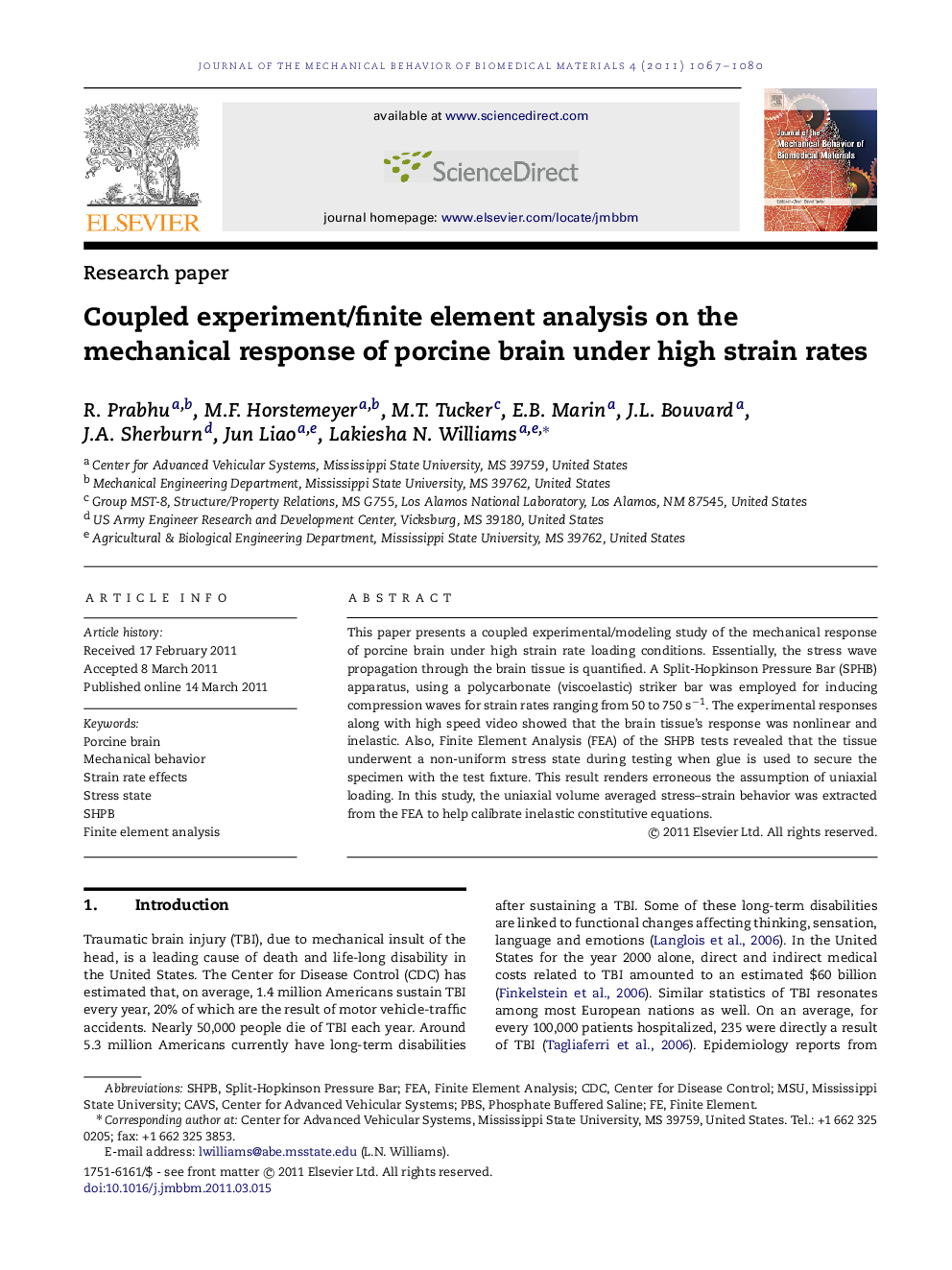| Article ID | Journal | Published Year | Pages | File Type |
|---|---|---|---|---|
| 811291 | Journal of the Mechanical Behavior of Biomedical Materials | 2011 | 14 Pages |
This paper presents a coupled experimental/modeling study of the mechanical response of porcine brain under high strain rate loading conditions. Essentially, the stress wave propagation through the brain tissue is quantified. A Split-Hopkinson Pressure Bar (SPHB) apparatus, using a polycarbonate (viscoelastic) striker bar was employed for inducing compression waves for strain rates ranging from 50 to 750 s−1. The experimental responses along with high speed video showed that the brain tissue’s response was nonlinear and inelastic. Also, Finite Element Analysis (FEA) of the SHPB tests revealed that the tissue underwent a non-uniform stress state during testing when glue is used to secure the specimen with the test fixture. This result renders erroneous the assumption of uniaxial loading. In this study, the uniaxial volume averaged stress–strain behavior was extracted from the FEA to help calibrate inelastic constitutive equations.
► Porcine brain tissue was tested using Split-Hopkinson Pressure Bar (SHPB) from 50–750 s−1. ► Porcine brain mechanical response was highly strain rate dependent and inelastic. ► FE simulations of SHPB experiments reveal non-uniform stress state in the sample. ► SHPB setup FE simulations render the assumption of uniaxial stress state erroneous. ► FE results indicate part of initial hardening trend in the sample to be intrinsic to material.
